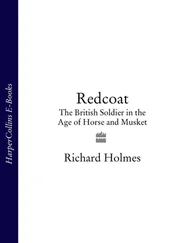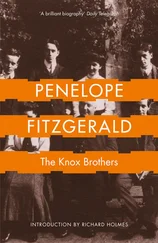But bred in Bristol’s mercenary cell
Condemned with want and penury to dwell,
What generous passion can refine my line?
Chatterton’s home was the small schoolhouse in Pyle Street, directly opposite the marvellous looming Gothic buttresses and tracery of St Mary Redcliff church. St Mary Redcliff dominated Pyle Street with its massive shadowy presence; morning and evening St Mary Redcliff bells would fill the rooms of the house. Chatterton’s father had been the schoolmaster of the Pyle Street free-school and also sexton of St Mary Redcliff. The schoolhouse and the church were both his territory, and they both became Chatterton’s. The father was by all accounts a curious man. He was a singer, and had sung officially in the Bristol Cathedral choir; but he also sang unofficially to himself on the long walks that he was noted for taking, and talked to himself as well. He was a collector and something of an antiquarian. He collected old coins and books and manuscripts, and when he became sexton of St Mary Redcliff he found a rich source of material in the hitherto neglected Muniment Room, with its many boxes and chests of papers, whose long slit window looked out over the top of the North Porch. Many of these ancient papers were transferred from the Muniment Room to the schoolhouse, and in the course of time to the attic room which was Chatterton’s. These papers were the only direct link that Chatterton had with his father, who died in the summer before he was born. Chatterton also had an elder sister, who had been born out of wedlock.
For a prodigy he was a solitary child and a slow one. At seven he was still unable to read. He dawdled about the schoolhouse, and about the aisles and tombs of St Mary Redcliff.
Thys is the manne of menne, the vision spoke,
Then belle for Evensonge my senses woke.
But there was already another side to his character. His sister, later Mrs Newton, recalled eight years after his death: ‘My brother very early discovered a thirst for pre-eminence. I remember, before he was five years old, he would always preside over his playmates as their master, and they his hired servants.’ The Victorian biographers tell the most winsome of the childhood anecdotes to illustrate that same ‘thirst for pre-eminence’. At the age of five he was apparently offered a Delft cup as a present to be decorated with ‘a lyon rampant’. But instead Chatterton asked that the picture should represent an angel with a trumpet. When asked why, he replied airily – ‘to blow his name about’. The story is nice, but may be apocryphal; the temperament it illustrates is certainly authentic. In a fatherless household, one is not surprised. A Bristol friend remembered him at a later stage, as a schoolboy and legal apprentice: ‘That vanity, and an inordinate thirst after praise, eminently distinguished Chatterton, all who knew him will readily admit. From a long and intimate acquaintance with him, I venture to assert, that from the date of his first poetical attempt, until the final period of his departure from Bristol, he never wrote any piece, however trifling in its nature, and even unworthy of himself, but he first committed it to every acquaintance he met, indiscriminately, as wishing to derive applause from productions which I am assured, were he now living, he would be heartily ashamed of …’ (Letter from Mr Thistlethwaite to Dr Milles). There is a good deal of personal sourness and pique in this statement, and as to Chatterton communicating all his poems it is simply incorrect. But as a description of Chatterton’s impression on friends and everyday acquaintances, the touchiness, the arrogance, the self-importance, the ‘eagerness of applause even to an extreme’, it has the ring of truth.
Perhaps the most convincing and also the most amusing evidence comes from a distant relative of Chatterton’s, a certain Mrs Ballance, who was lodged in the same house as Chatterton when he first came to London. As a relation, she obviously tried to be neighbourly. She recalled with exasperation, ‘he was as proud as Lucifer. He very soon quarrelled with her for calling him “Cousin Tommy”, and asked her if she had ever heard of a poet’s being called Tommy. But she assured him she knew nothing of poets and only wished he would not set up for a Gentleman.’ Mrs Ballance added a pathetic and very human note: ‘He frequently said he should settle the nation before he had done; but how could she think her poor cousin Tommy was so great a man as she now finds he was? His mother should have written word of his greatness, and then, to be sure, she would have humoured the gentleman accordingly.’
But if Chatterton’s character was manifest from the start, his capabilities were not. The first important moment seems to have been when he began to read. The way any primary skill is first exercised – swimming, riding, reading – often has a decisive effect on its subsequent development. Chatterton began to read only very gradually, and then in a curious and highly significant fashion. Mrs Newton, his sister, again recalled: ‘He was dull in learning, not knowing many letters at four years old, and always objected to read in a small book. He learnt the alphabet from an old Folio music-book of my father’s, my mother was then tearing up for waste paper: the capitals at the beginning of the verses, I assisted in teaching him.’ The importance of this earliest reading material has never been fully realized.
From the very start, literature and the medieval legacy of the St Mary Redcliff papers were identified in Chatterton’s mind. And not only at an intellectual level. For Chatterton’s contact with this special past, so inextricably involved with both his dead father and the earlier inhabitants, writers and artists of St Mary Redcliff, had from the beginning a solid material presence of vellum and parchment scraps which filled the little schoolhouse with their dust and oily odour and resilient crackling touch. They were a vivid familiar presence, totally uninvested with the sacred and scholarly aura which museums, glass cases, and academic pincenez normally impart to such things. The Chatterton family were at times almost literally ankle-deep in the medieval past. We know that the mother quite casually used them for knitting patterns, or for ‘waste paper’ torn up presumably for fires or cleaning; and that many of the schoolhouse books were actually covered by these papers in the form of makeshift dust jackets. It was the large illuminated capitals on some of these sheets which first caught the young Chatterton’s eye. Gothic and medieval scripts were his earliest acquaintance. He read the tomb inscriptions and brasses as another child reads specially edited fairy tales. His first solid piece of reading was the bristling Germanic-Gothic pages of the family’s Black Letter Bible. In short, Chatterton came to literary consciousness in another world. It was Bristol, but it was late-medieval Bristol. It was the Bristol of the men like William Canynges who helped to rebuild and restore St Mary Redcliff, and of the late-medieval scholar-poets whom great men such as Canynges befriended and patronized, acting almost as a father might have done. It was above all (as it turned out), the Bristol of a brilliant poet-monk whose first name was oddly enough the same as Chatterton’s; an admirer of Chaucer, an admirer of St Mary Redcliff, an intimate friend of the fatherly William Canynges, the brilliant star of the whole company of talented poets. This poet-monk’s name was Thomas Rowley. But Thomas Rowley never existed. Only in Thomas Chatterton’s head. From a single inscription on a tomb, Chatterton was to create this man’s life, his letters, his poems, his ballades, his Tragedies, his most intimate concerns with the problems of living and literature. Thomas Rowley was everything that Thomas Chatterton desired to be. And in the most real and most disturbing sense, Thomas Rowley was Thomas Chatterton.
Читать дальше












